Test it for free for 30 days or get in touch if you’d prefer to chat.
Fancy giving Distribution Engine a try?
Have a play around for free, or get in touch if you’d prefer to chat.
Understanding Lead Assignment In Salesforce: Core Concepts & Best Practices.
Key takeaways:
Functional vs. strategic lead routing – Most systems can technically push leads around, but as you scale, bad routing logic creates the classic mess: overlap, dropped handoffs, and leads gathering dust
Why effective assignment matters – When routing fails, you get lopsided workloads and cold leads, and while everyone obsesses over the five-minute response window that doubles conversions, accuracy and fairness are equally make-or-break.
Core Salesforce tools & limitations – Assignment Rules, Queues, and Flows handle the straightforward stuff beautifully until your scenarios get complex, at which point you're duct-taping exceptions until the whole thing becomes a maintenance nightmare.
Four foundational principles – The systems that actually hold up long-term are built on clarity, automation, fairness, and visibility - simple rules that fire automatically, distribute equitably, and surface the metrics you need.
Common pitfalls & best practices – Teams hit walls around scalability and workload balance because they didn't build in fallback logic, so the move is to automate early, review religiously, route by skill and capacity, and redistribute stalled leads fast.
Strategic RevOps focus & NC Squared's solution – Lead assignment is core RevOps territory where marketing meets sales, and tools like NC Squared's Distribution Engine automate the whole thing natively in Salesforce - giving you flexibility, transparency, and fair distribution so your team can focus closing pipeline instead of constantly fixing plumbing.
Your lead assignment system may technically work - every new record finds a home, and the leads keep moving. But "technically functional" and "strategically sound" are not the same thing.
What runs smoothly with a ten-person sales team starts showing cracks at twenty. Territories begin to overlap in ways that create confusion rather than coverage. Handoffs during out-of-office periods miss the mark. Queues quietly accumulate high-priority leads while reps wait for assignments. Exception cases multiply until you're spending more time managing workarounds than actually routing leads.
This guide explores how to architect a routing system for your CRM to assign leads that's responsive, equitable, & built to scale.
The Case for Prioritizing Lead Assignment.
Salesforce promises simple routing. Reality delivers something else: a patchwork of Salesforce lead assignment rules, queues, Flows, & manual interventions. When lead routing fails, the impact cascades:
- Sales reps experience feast-or-famine workloads
- High-quality leads go cold before initial contact
- Managers lose visibility into ownership clarity
Layer in territories, product lines, & global time zones, & complexity multiplies exponentially.
Speed-to-lead remains critical - sub-5-minute response times can double conversion rates. But velocity means nothing when leads reach the wrong rep, or no rep at all.
The solution is using the right software to build assignment logic that reflects your actual go-to-market motion - or deploying a Salesforce-native engine that automates the entire process without the makeshift workarounds.
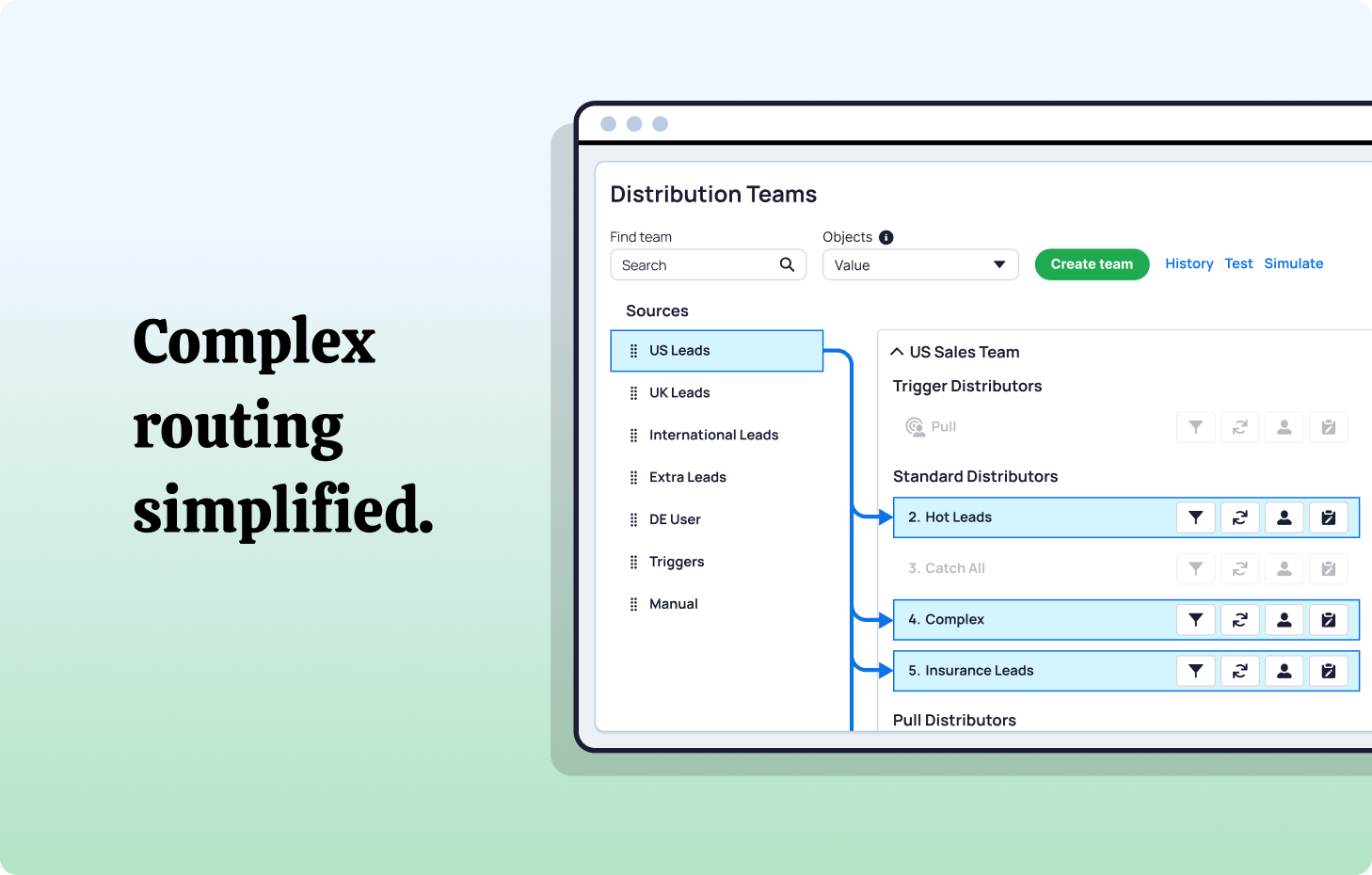
Defining Lead Assignment: Core Mechanics.
At its foundation, lead assignment resolves a single question: who’s the lead owner?
Salesforce provides baseline tools:
- Assignment Rules for straightforward logic like geography or region
- Queues for temporarily unassigned leads
- Flows/Workflows for automation sequences such as basic round-robin assignment
These suffice initially - not indefinitely. As lead sources, roles, & edge cases proliferate, the system strains. One custom field adjustment or manual override later, you're in firefighting mode.
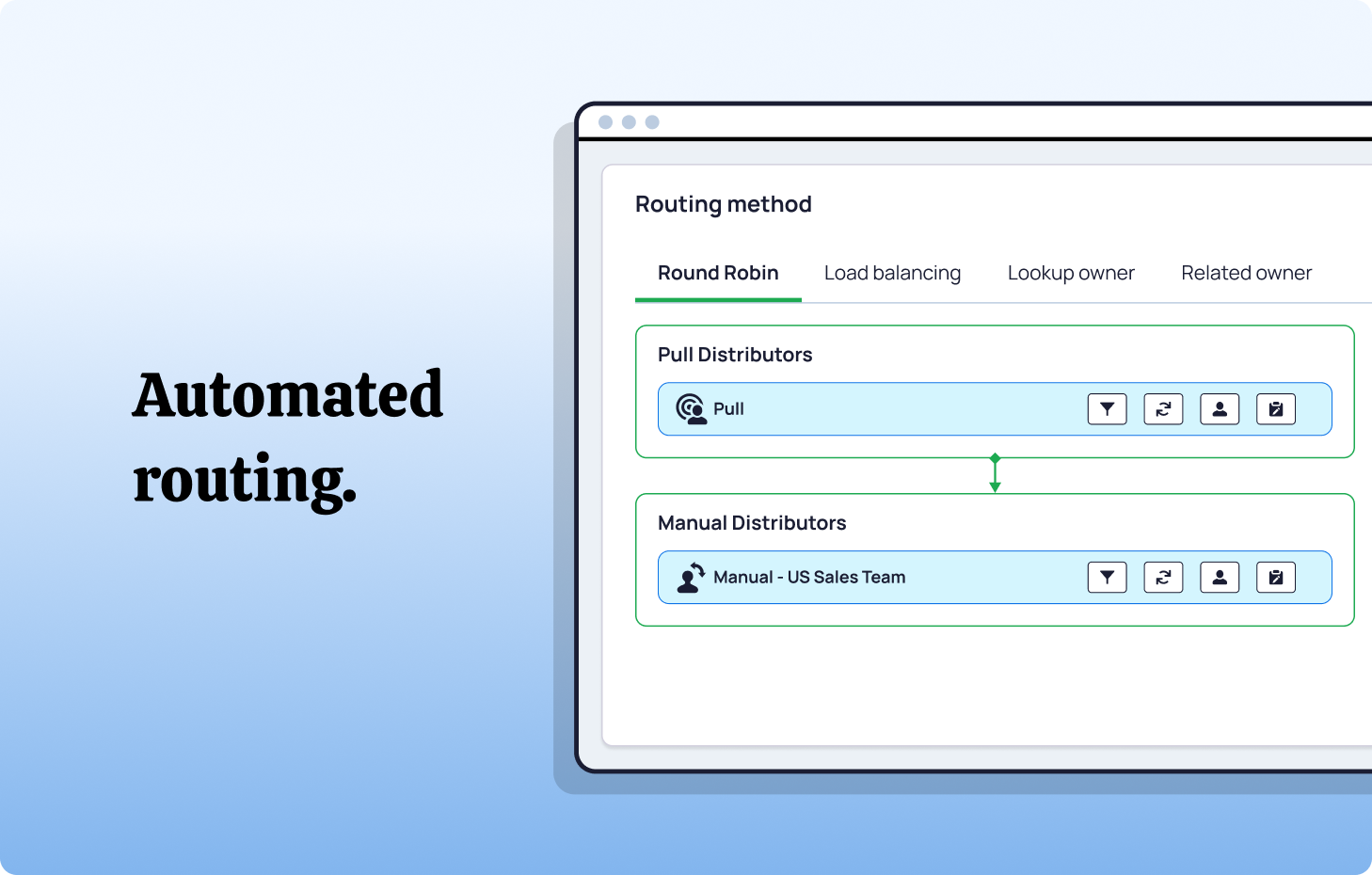
Four Foundational Principles for Sustainable Lead Assignment.
Building clean routing logic doesn't require Salesforce engineering expertise. It requires adherence to these core truths:
Clarity trumps complexity.
Every rule entry should aim to execute one function. "If X, then Y." If explanations require a complex flowchart, it's overengineered.
Automation trumps reaction.
Manual routing destroys speed-to-lead. Assign ownership the instant a lead enters your system.

Fairness builds trust.
Balanced lead distribution translates to engaged reps & faster follow-up. Burnout degrades performance for everyone.
Visibility drives accountability.
Without performance metrics, management operates blind. Dashboards aren't optional - they're mission-critical infrastructure.
Think of routing like building infrastructure: invisible when functioning properly, catastrophic when compromised.
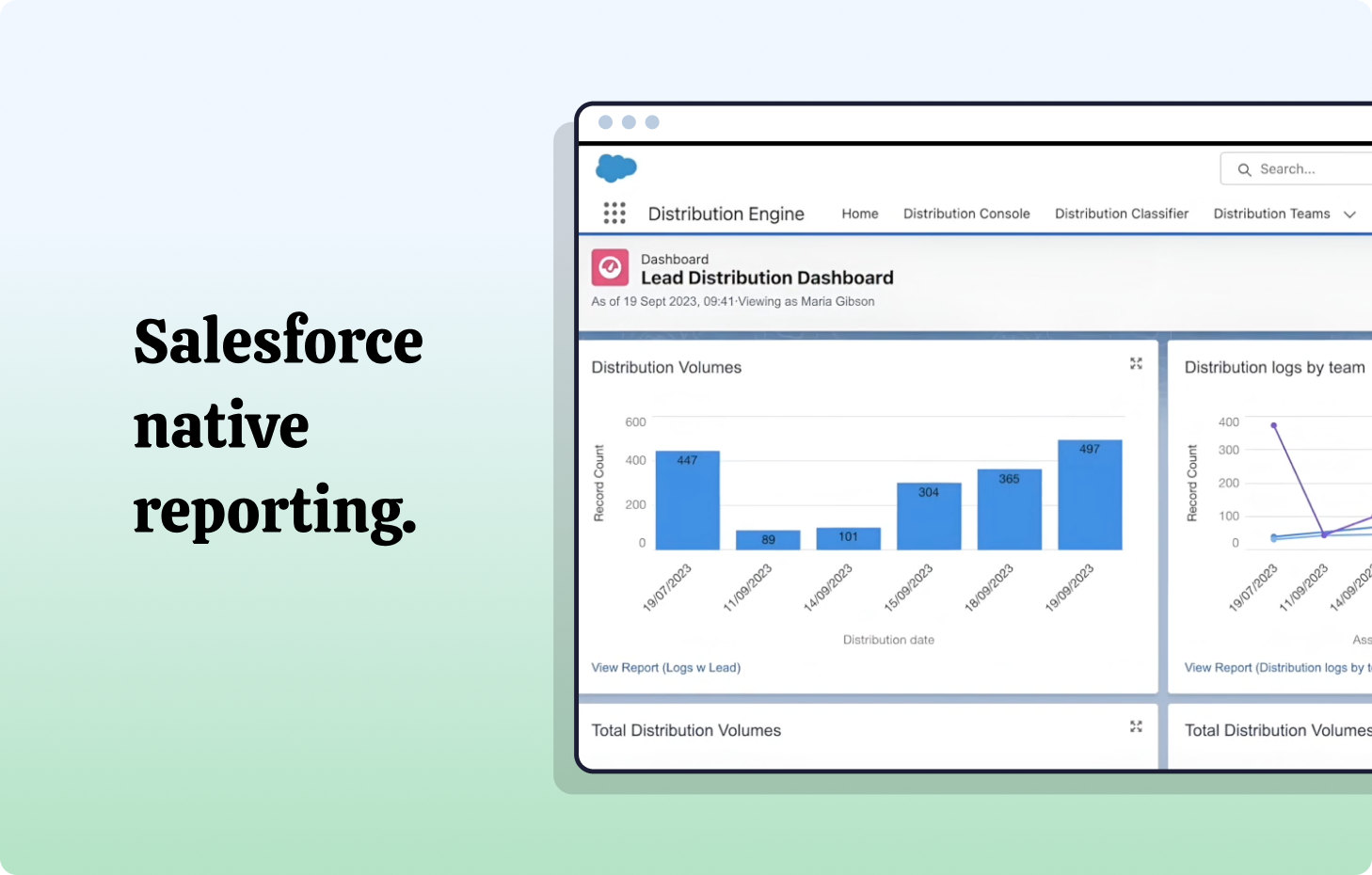
Common Routing Pitfalls.
Even thoughtfully designed systems break for predictable reasons:
Out-of-the-box rules reach scalability limits. They lack flexibility. Once you need round-robin distribution, workload balancing, or multi-conditional logic, you're layering workarounds indefinitely.
Workload considerations get overlooked. Territory-based routing alone creates dramatic rep imbalances - some overwhelmed by incoming leads, others idle.
Fallback logic doesn't exist. Leads route to inactive users or a salesperson who’s out-of-office, then languish unnoticed.
Visibility gaps persist. Without metrics tracking queue duration or response velocity, you're operating on assumptions, not data.
Sound familiar? Most teams play perpetual whack-a-mole until the next crisis emerges. Effective case assignment offers a more strategic path forward.
Lead Assignment Best Practices: Proven Approaches.
Automate early, audit regularly.
Start simple, then review quarterly. Routing logic degrades quickly as teams evolve, markets shift, & territories reorganize.
Balance workloads strategically.
Fairness protects revenue and maintains lead management. Implement workload caps or rotation logic to maintain lead velocity & rep morale simultaneously.
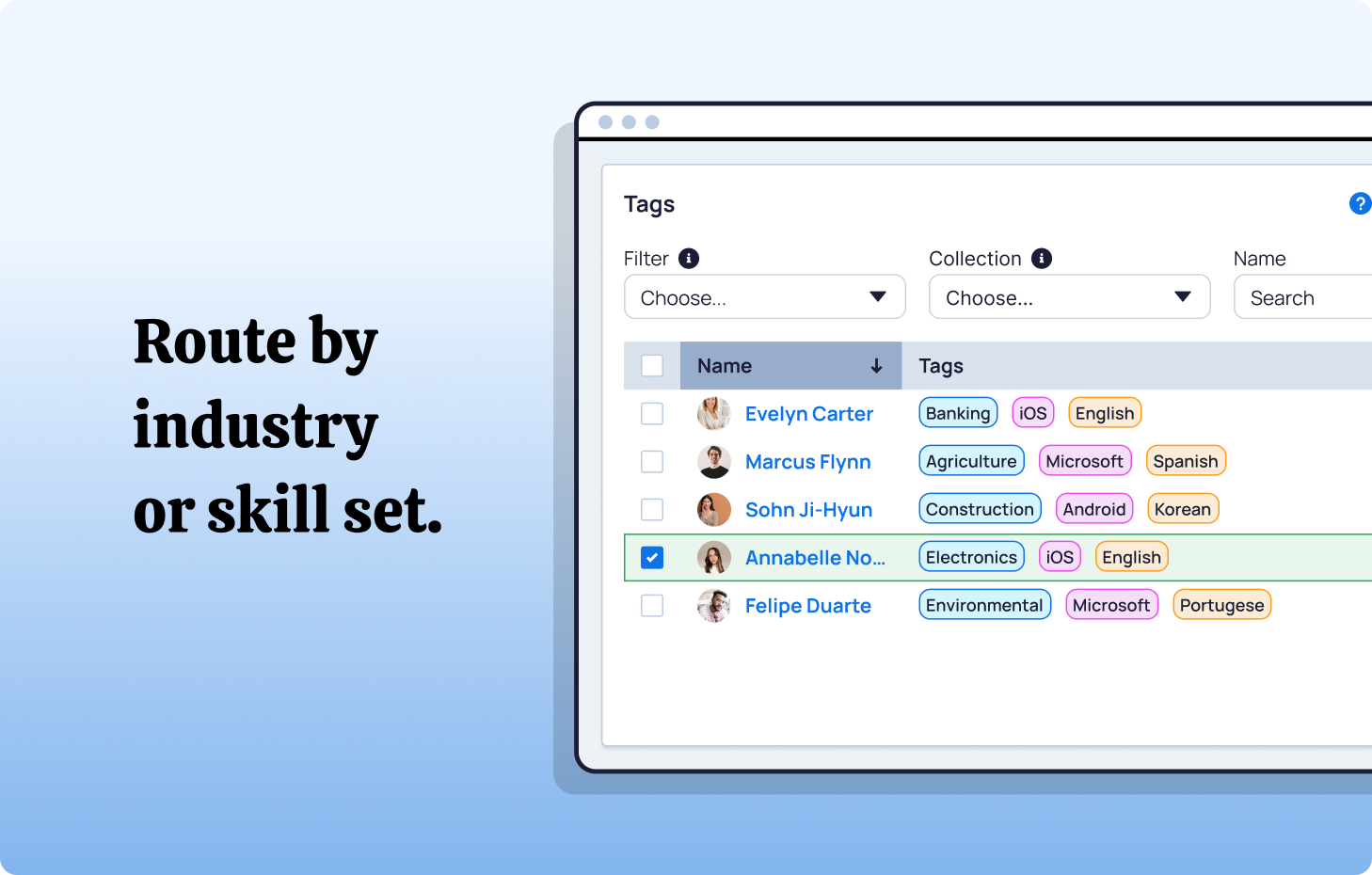
Match skills & availability.
Route inbound leads to the right person in a position to close - by expertise, region, or active hours. Don't send EMEA leads to an offline US rep.
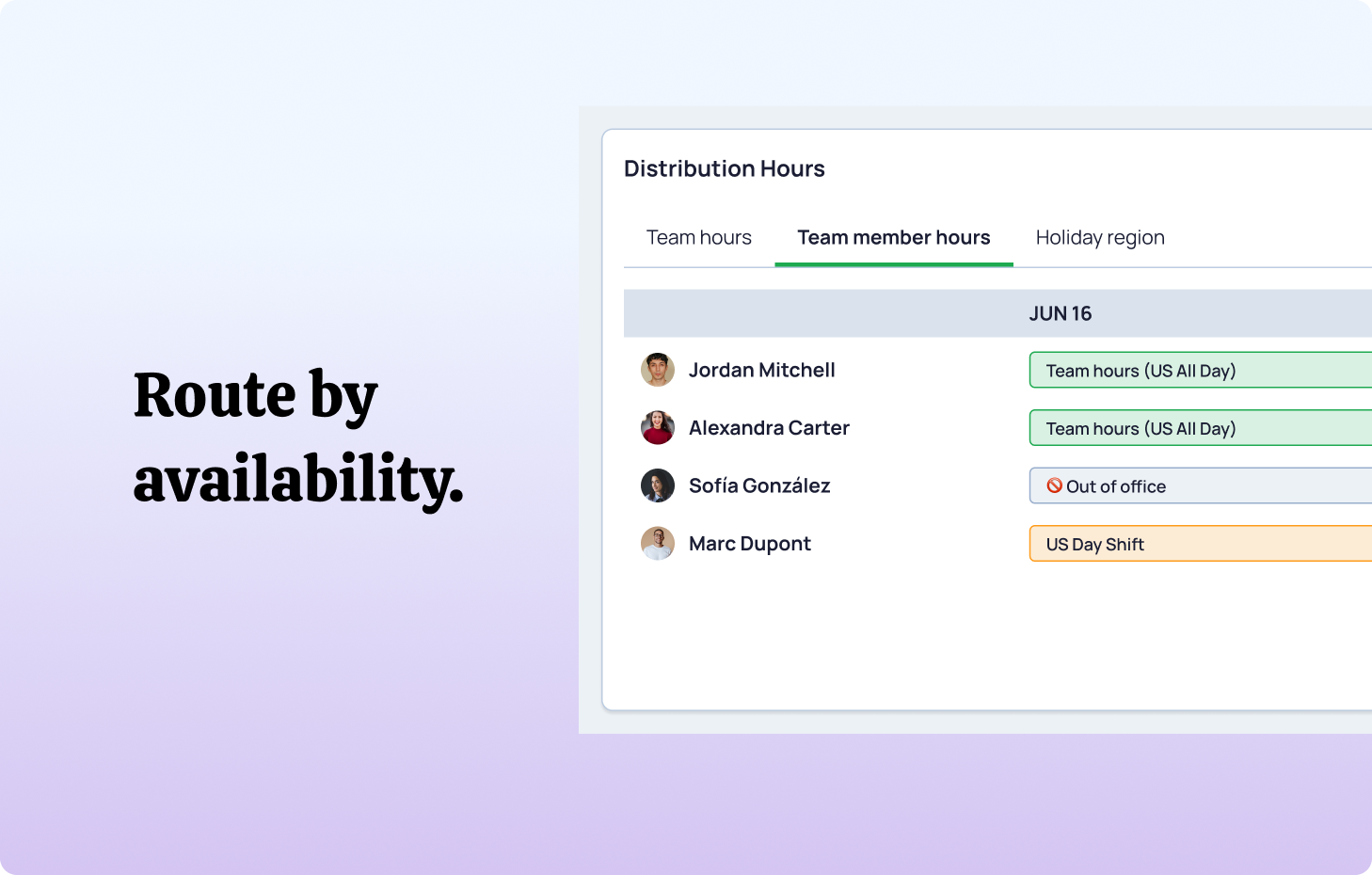
Monitor response velocity.
Track pickup times via dashboards. Bottlenecks typically indicate unclear ownership or missing fallback protocols.
Reroute idle leads automatically.
Establish SLAs, then reassign leads that sit untouched. No exceptions.
This doesn't require extensive development resources - just clear process design & commitment to continuous improvement.
360 Learning demonstrated this approach when they implemented NC Squared's Distribution Engine, achieving 97% routing accuracy & sub-10-minute response times - driving a 40% conversion increase.
Whoever owns the work should own the workflow.
When routing workflows are controlled by Salesforce architects and developers, momentum stalls further.
It makes sense that teams closest to the work and the requirements should have the keys to how their workflows are built and managed.
Lead routing is at the critical junction between marketing & sales - where intent transforms into pipeline. Get it wrong, & you experience:
- Degraded follow-up velocity
- Distorted conversion analytics
- Collapsed capacity planning
Treat routing as operational infrastructure, not a one-time project. Ask these diagnostic questions:
Does routing align with our ICP & territory strategy?
Are reps loaded equitably?
Can we modify logic without developer dependency?
"Yes" indicates mature RevOps capabilities. "No" signals hidden revenue friction.
Excellence in Practice: NC Squared's Distribution Engine.
So we've established that Salesforce's native solutions fall short. Architecting a bulletproof workaround sounds like months of Flow debugging, integration mapping, and late-night Apex rewrites. But here's the relief: you don't need to build it yourself.
That's precisely where Distribution Engine steps in. Enterprise-grade heavy-duty routing without the heavy-duty headache - native to Salesforce, zero external dependencies, and designed for RevOps, admins and GTM teams to implement not developers to lock in a ‘black box’.
It provides capabilities that should've been Salesforce defaults:
- Flexible routing rules - by ownership, permissions, territory, workload, or skill-matching
- Capacity-aware assignment respecting current rep load
- Real-time rerouting when leads remain untouched
- Performance dashboards delivering instant visibility
- No-code configuration enabling admin-level adjustments
The outcome: converting more pipeline, thanks to accelerated response times, equitable distribution, & elevated conversions - all without leaving your Salesforce environment.
Consider Tebra, who unified their post-merger routing infrastructure with Distribution Engine, increasing speed-to-lead +40% and converting +30% more as a result.
If you've debugged broken Flows at 2 a.m., this is your exit strategy.
Build vs. Buy (spoiler: there is no ‘free’ option).
Building custom routing logic in Salesforce is possible. Many teams attempt it. Here's the actual cost:
Maintenance burden: Every new rule introduces fragility.
Scalability constraints: Growth multiplies exception handling.
Visibility limitations: Custom systems rarely include robust reporting.
Velocity drag: Every modification consumes developer bandwidth.
Deploying Salesforce-native routing like Distribution Engine means RevOps & Admins focus on strategy, not constant troubleshooting.
Consider this framing: managing your sales process generates revenue. Maintaining the plumbing infrastructure behind it doesn't.
Building Your Lead Assignment Framework.
Start with a scalable blueprint:
- Map all sources - Document every inbound channel & its routing requirements.
- Define ownership logic - Territory, product line, vertical - be explicit & unambiguous.
- Add fairness rules - Round-robin distribution, capacity thresholds, or weighted logic.
- Layer automation - Include SLAs & fallback triggers for edge cases.
- Monitor continuously - Track balance, speed, & volume weekly.
Whether you manage this manually or through NC Squared, this clarity compounds value daily.
The Strategic Takeaway
Lead assignment isn't about rules - it's about responsiveness.
When leads sit idle or reps carry uneven loads, that's not a Salesforce limitation - it's a process design flaw. & it's solvable.
Simplify your logic. Automate the execution. Build visibility. Then decide whether to maintain it internally - or let NC Squared's Distribution Engine handle it natively, reliably, and at speed.
Because your reps should be selling - not wondering who owns the next lead.
Learn how Distribution Engine helps RevOps teams route faster & sell smarter →
Fancy giving Distribution Engine a try?
Have a play around for free, or get in touch if you’d prefer to chat.
Take us for a spin with a 30 day Free Trial
Have a play around for free, or get in touch if you’d prefer to chat.
%20dark.avif)